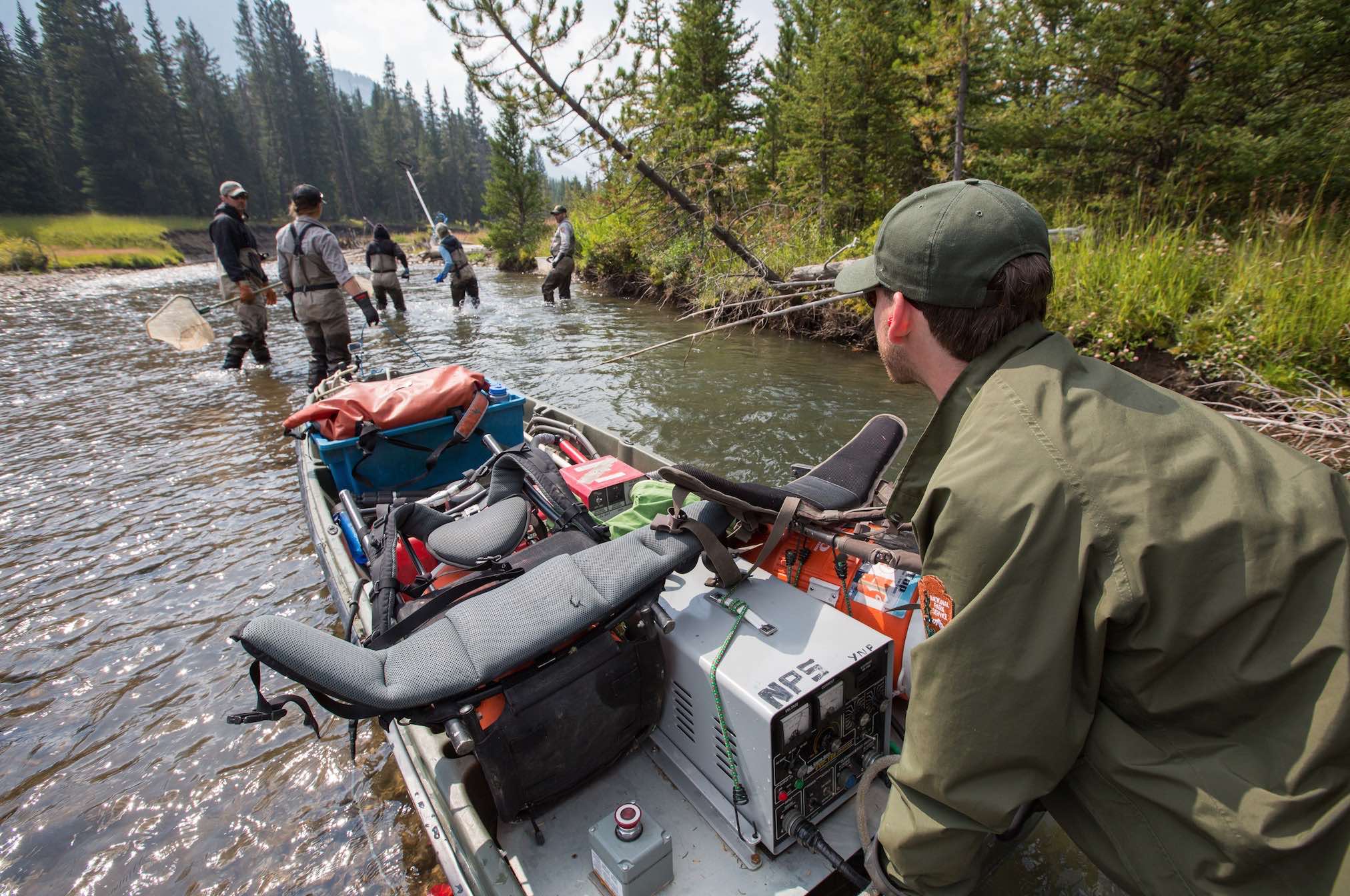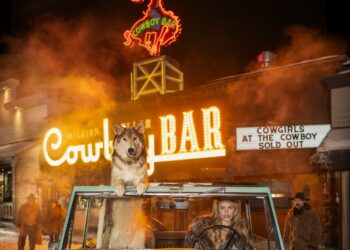Biologists: Efforts appear promising
By Jessianne Castle EBS ENVIRONMENTAL & OUTDOORS EDITOR
BOZEMAN – Last summer, 22 fluvial Arctic grayling were pulled out of a small mountain stream just 30 miles south of Big Sky. Once measured and tagged, they were released back into the waterway that bares their namesake.
Just three years earlier, some of those very fish made their first journeys through the water as tiny fry, when tens of thousands of eggs were incubated and then hatched in the upper reaches of Grayling Creek. Together, with juvenile Westslope cutthroat trout, the fish set about recolonizing their historic waters.
The 2018 capture, which also counted 440 Westslope cutthroat trout, will be replicated this summer and is an effort to understand whether fish restoration has been successful on Grayling Creek, a stream that flows through Yellowstone National Park and is just one of numerous park restoration projects. Researchers hope to better understand the successes of the restoration effort by looking at the population size, age and size of the fish, and whether they are naturally reproducing.
The work on Grayling Creek is what fisheries biologist Colleen Detjens described as a “huge restoration effort” during Yellowstone National Park’s 2019 annual spring angling meeting on April 29.
Beginning in 2012, restoration efforts saw to the development of a barrier that would prevent non-native fish from swimming upstream into the upper reaches of the river, as well as the still controversial treatments of Rotenone, a piscicide that kills gilled aquatic species. This was followed by several years of grayling and Westslope reintroductions.
Native grayling, Westslope cutthroat trout and Yellowstone cutthroat trout are endemic to many of Montana’s waters, but are now imperiled by the threat of thriving non-native species such as rainbow or brook trout. These non-native fish were stocked in many park and state waters during an era when management objectives prioritized sportfishing and the impacts of non-native species weren’t well understood.
The discussion of Grayling Creek was just one topic on the agenda during the angling meeting, which was held in Bozeman on April 29 at the Hilton Garden Inn. Approximately two dozen individuals were in attendance, and they heard from several presenters about the Yellowstone Native Fish Conservation Program.
In Yellowstone Lake, suppression of lake trout continues in light of historic Yellowstone cutthroat trout decline. Last year, staff fished 6,000 miles of gillnet on a nightly basis as a form of passive capture technique. Assessments indicate that mature adult lake trout are becoming less common in the water system, though young lake trout are still common.
“The world-wide range for this fish—Yellowstone cutthroat trout—is in Yellowstone Park. So [Yellowstone Lake] is very important for the fish’s longevity and existence,” said fisheries biologist Phil Doepke. “We don’t suspect the gillnets are going to remove all the lake trout from the system, so we’re doing other research trying to find out other ways of removing lake trout from the system.”
Many of these alternative methods target lake trout eggs, and include sucking up the eggs from the lake bottom, killing the eggs with Rotenone, and killing the eggs using organic material such as dead lake trout that were caught in the gillnets or the application of a soy and wheat gluten pellet. According to Doepke, this latter method has proved most successful in early testing.
Doepke said the pellet—known as a carcass analog pellet—effectively kills the eggs within a matter of days as it breaks down in the water, and after approximately 30 days the pellets are fully dissolved. Further research will reveal the impacts of nutrients being added into the water system from the pellets and whether this is a safe option for lake trout removal.
On the Upper Gibbon River, staff will complete a third year of Rotenone treatment this summer and will reintroduce native fish in the fall. Unlike most reintroduction efforts that involve incubating the eggs within the river, fish introduced in the Gibbon River system are more mature so that common loons have something to feed on when they arrive in the spring.
“We’re trying to balance a bunch of different resource issues to make it the best thing it can be,” said fisheries supervisor Todd Koel.
Within the Lamar drainage, which includes Slough, Soda Butte and Buffalo Fork creeks, biologists have recently completed an assessment of rainbow and Yellowstone cutthroat trout migration, as well as inventoried for hybridized rainbow-cutthroat. The results indicate that hybrid trout are present far up the Lamar River.
Overall, park staff continue to brainstorm how best to combat these hybridized trout, which pose a risk to the genetic purity of the Yellowstone cutthroat. Discussions center around how to effectively identify hybrids and whether selective removal and mandatory fish kills for anglers can be effective.
“During the summer there’s quite a lot of people [on the Lamar River and Slough Creek] so a lot of these fish are being caught numerous times,” Detjens said. “If we can get anglers to help us remove those hybrids and recognize hybrids and also help us remove the rainbow trout, that’s going to be a huge help toward our management goals.”
As a final note, fisheries technician Drew MacDonald added that the National Park Service is going to begin intensive surveys for aquatic invasive species such as zebra and quagga mussels this year. In past years, the surveys were conducted by Wyoming Game and Fish. In addition to adding intense watercraft inspections, he said the park has implemented a ban on watercraft with sealed internal water ballast tanks that make decontamination difficult.
An additional fisheries meeting was held in West Yellowstone on April 30, in Cody, Wyoming, on May 7, and in Jackson, Wyoming, on May 8. The fishing season in Yellowstone will open on Saturday, May 25.
For more information visit nps.gov/yell/learn/fisheriesscience.htm.














